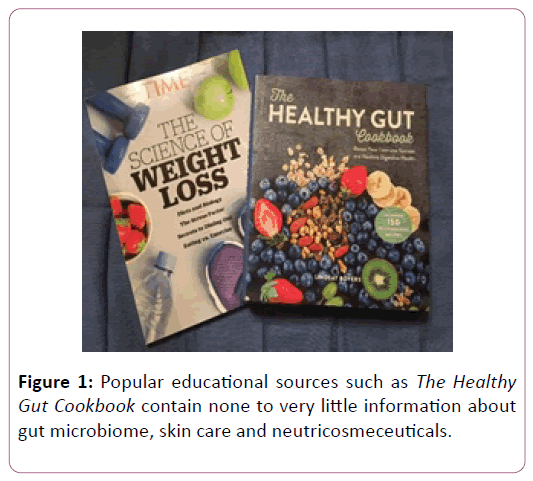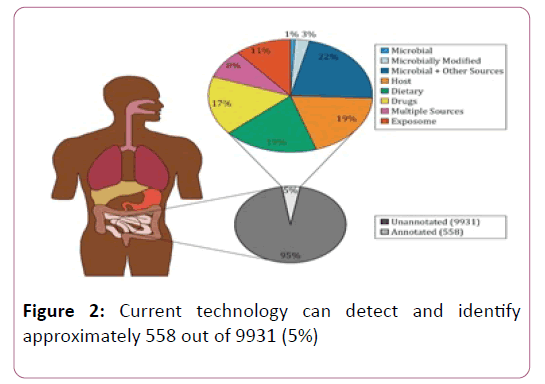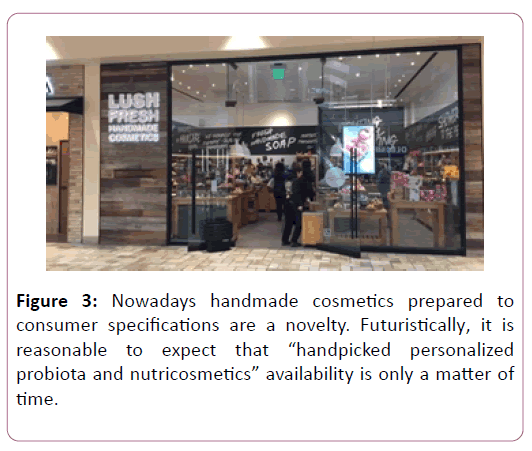Skin Aging and Beauty Exploring the Gut Microbiota Connection
Nicole C Sikora , Fernando Vargas and Marek K Dobke*
Department of Surgery, Division of Plastic Surgery, University of California San Diego, USA
- *Corresponding Author:
- Dobke MK
Department of Surgery
Division oPfl astic Surgery
University of California San Diego, USA
Tel: 619 5 43 6084
E-mail: mdobke@ucsd.edu
Received date: February 04, 2019; Accepted date: February 07, 2019; Published date: February 21, 2019
Citation: Dobke MK, Sikora NC, Vargas F (2019) Skin Aging and Beauty – Exploring the Gut Microbiota Connection. J Aesthet Reconstr Surg. Vol 5 No.1:1.
Copyright: © 2019 Dobke MK, et al. This is an open-access article distributed under the terms of the Creative Commons Attribution License, which permits unrestricted use, distribution, and reproduction in any medium, provided the original author and source are credited.
Editorial
In the new era of personalized modern medicine, more “precise” and diverse concepts of wellness and approaches in the development and maintenance of good health will sooner or later apply to cosmetic surgery and the field of cosmetology in general. For example, a relatively new field of research on gut and skin microbiome and its understanding provides insight into the microbial involvement in human skin physiology and related disorders [1,2]. Based on current research, evidence, and trends, an extrapolation could be made that secreted chemicals and bacteria within the human gut have a drastic effect on skin appearance and its aging [3,4]. A discussion on the extent of the impact of gut microbiome on human health and how it can be used to advance the field of cosmetology and good health is timely.
Noninvasive approaches to reduce the appearance of skin aging have gained significant popularity with the advent of procedures such as volumizing contours, skin tightening, and smoothing. However, even “procedure” oriented plastic surgeons agree that a comprehensive and personalized approach to skin appearance and rejuvenation has to be inclusive of factors such as diet, environment and lifestyle.
It is important to understand that differential aging of the skin includes factors from within our body. Recognizing this relationship is needed to have a better appreciation of both factors that influence “the outside” skin appearance. Newer studies of the human microbiome unveil more and more information about microbiome diversity [3-5]. This leads to increasing body of knowledge and new questions regarding the effect of this microbial diversity within our gut and its influences on the diversity of health status pathways, including aging and beauty, and the status of the skin. Data from understanding the gut-skin axis will soon influence a more personalized approach than current cosmetology, which can be applied to reduce aging and improve skin beauty with higher accuracy and effectiveness.
Microbiome is defined as a collection of living organisms such as bacteria, fungi or viruses that live inside and on the surface of the body. In fact, these microbes outnumber human cells almost 10:1 [2]. Gut microbiome has been known to regulate and influence the effectiveness of the treatment of such skin conditions as psoriasis, acne, and atopic dermatitis; however, still little is known about its effect on skin health and aging [3]. Holistic aestheticians and Ayurveda followers in particular believe that the frequency of bowel movements and elimination of toxins are important to control acne and ensure a flawless skin complexion. Contemporary peer reviewed publications provide ample and growing evidence of the magnitude of how gut microbiome impact human health, yet still many informative “pieces” appear fragmented as some scientific issues are not fully understood or explored, and consequently not popularized (Figure 1).
For example, the process of continual skin “renewal” including epidermal differentiation is controlled by specific transcriptional programs, regulated by genes. Yet expression and functional products of these genes are heavily impacted by gut microbial products that influence the signaling pathways in the skin [2-4]. Therefore, it should not be surprising that dietary adjustments alter the gut microbiome and lead to changes, for better or worse, in the skin. With relatively few studies in peer reviewed literature, but with robust information and discussion in mass media, it appears that limited diets, such as a Vegan diet (or any non-diversified diet), alter the gut microbiome and negatively impact skin attractiveness [5]. Impaired detox reactions in the gut, low zinc, lacking of omega 3 factors, vitamin B12, iron, proteins (collagen), are all co-contributing factors [5].
Although scientific discoveries have leapt forward in recent years and progresses rapidly with the advantages of DNA sequencing as an investigative tool, current microbiome research faces limitations because, so far, only about 5% of molecules found in the human gut were or can be detected and/or identified (Figure 2) molecules in the human fecal samples. Based on that data, the relative composition of major molecule groups in the gut was determined.
However, the identified molecules in human fecal material yield a composition of almost 26% of microbially related molecules, 19% related to diet, 16% to drugs, and 11% to exposome (environmental factors such as lifestyle or climate).
The saying “you are what you eat” has been implying for years how diet effects our gut microbiome and our health. Certainly chemicals and nutrients exert a direct effect on body systems. But it also appears that a combination of direct dietary impact, and indirect through alteration of gut microbiome, is of paramount importance. Quantitative and qualitative changes of the molecules that gut bacteria secrete, which enter the circulatory system and are ultimately deposited in different tissues affect the characteristics of the skin. For example, long chain fatty acids within the circulatory system have been known to improve many skin conditions, and plausibly could also improve the elasticity and aging of the skin. In fact, individuals that have a vegan lifestyle have a significantly different gut microbiome compared to nonvegetarian omnivores with a diverse diet [3-7].
Gut microbiome can be altered not only by ingesting supplements or adjusting diet, but by many environmental factors such as stress, sleep deprivation, lifestyle, air pollution, climate, etc. [4,5,7]. It is unique to every individual and can be used as a way to personalize treatment methods towards skin aging. Specifically, skin aging components are the loss of substance and elasticity resulting in a wrinkled skin surface and sagginess, as well as loss of attractive colors. On the molecular level, key causes contributing to skin aging is the lack of Vitamin A, disintegration and loss of collagen, free radicals, and the general loss of vital nutrients.
Additionally, the microbiome of older individuals is significantly different than the one of younger individuals, indicating that gut microbiome plays a role in aging [7]. The question arises whether the age-associated changes in intestinal microbiome (and vice-versa) mechanisms involved in this multidirectional relationship, could be the subject of microbiome-based interventions by means of probiotics for healthy aging (or ideally slow or no aging)!
Consequently, the development and marketing of nutricosmetics have become increasingly popular, especially among a younger population segment looking for more natural ways of beautifying and delaying skin aging by “action” from within. Certain doses of supplements such as vitamin A, C, E, minerals, or collagen alter the concentration in skin composition; ultimately, leading to an increase in elasticity and reduced appearance of aging skin. Some of these external sources are ingested or directed straight into the skin. Others, instead of treating and correcting simple deficiencies perform, like a “Good Guys Trojan Horse”, impacting tissues, maintaining good skin composition and homeostasis through regulatory mechanisms and changes of the gut microbiome [3,4,6]. These indirect pathways leading to skin health appear to be effective “skin care secrets”.
Developments resulting from the utilization of scientific discoveries related to gut-skin microbiomes in concerto with personalized skin care will maximize the skin’s potential to stay “forever young” [3,5]. Obviously, only robust statistical modeling would yield further insights from a health and cosmetic database the knowledge how gut microbiota and gutskin axis could become meaningful, and applied to secure everlasting skin beauty. There is no doubt that in the age of personalized and precision medicine, personalized skin care and individually customized cosmetics will impact our ability to utilize the cosmetic potential of gut microbiota. Futuristically, a personalized approach with gut microbiota analysis, will become the part of the medical marriage between genomics and skin care, and will certainly help in designing personalized gut-skin axis adjustments (Figure 3).
References
- Grice EA, Segre JA (2011) The skin microbiome. Nat Rev Microbiol 9: 244-253.
- Huttenhower C, Gevers D (2012) (The Human Microbiome Project Consortium) Structure, function and divesrity of the healthy human microbiome. Nature 486: 201-214.
- Vaughn AR, Notay M, Clark AK, Sivamani RK (2017) Skin-gut axis: the relationship between intestinal bacteria and skin health. World J Dermatol 6: 52-58.
- Salem I, Ramser A, Isham N, Ghannoum MA (2018) The gut microbiome as major regulator of the gut skin axis. Front Microbiol 9: 1459-1487.
- Schagen SK, Zampell VA, Makrantonaki E, Zouboulis CC (2012) Discovering the link between nutrition and skin aging. Dermatoendocrinol 4: 298-307.
- Glick-Bauer M, Yeh MC (2014) The health advantage of a Vegan diet: exploring the gut microbiota connection. Nutrients 6: 4822-4838.
- Nagpal R, Mainali R, Ahmadi S, Wang S, Singh R, et al. (2018) Gut microbiome and aging: physiological and mechanistic insights. Nutr Healthy Aging 4: 267-285.
Open Access Journals
- Aquaculture & Veterinary Science
- Chemistry & Chemical Sciences
- Clinical Sciences
- Engineering
- General Science
- Genetics & Molecular Biology
- Health Care & Nursing
- Immunology & Microbiology
- Materials Science
- Mathematics & Physics
- Medical Sciences
- Neurology & Psychiatry
- Oncology & Cancer Science
- Pharmaceutical Sciences



